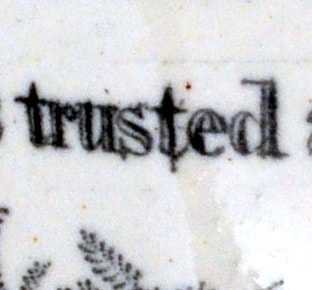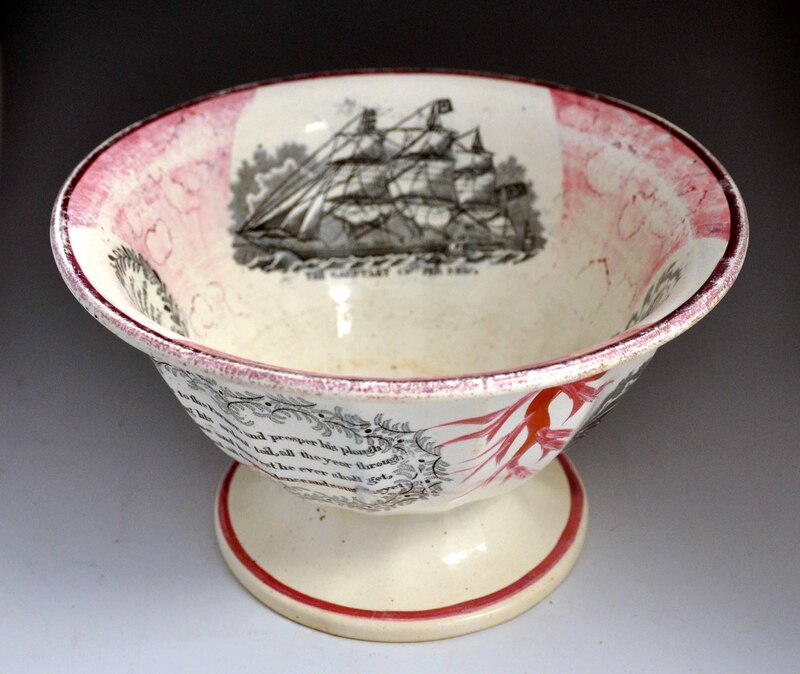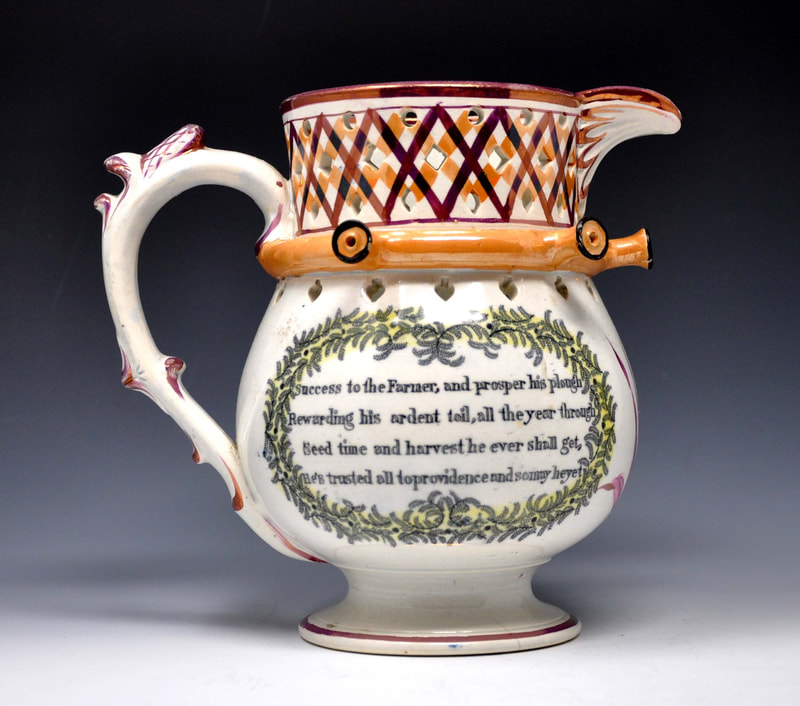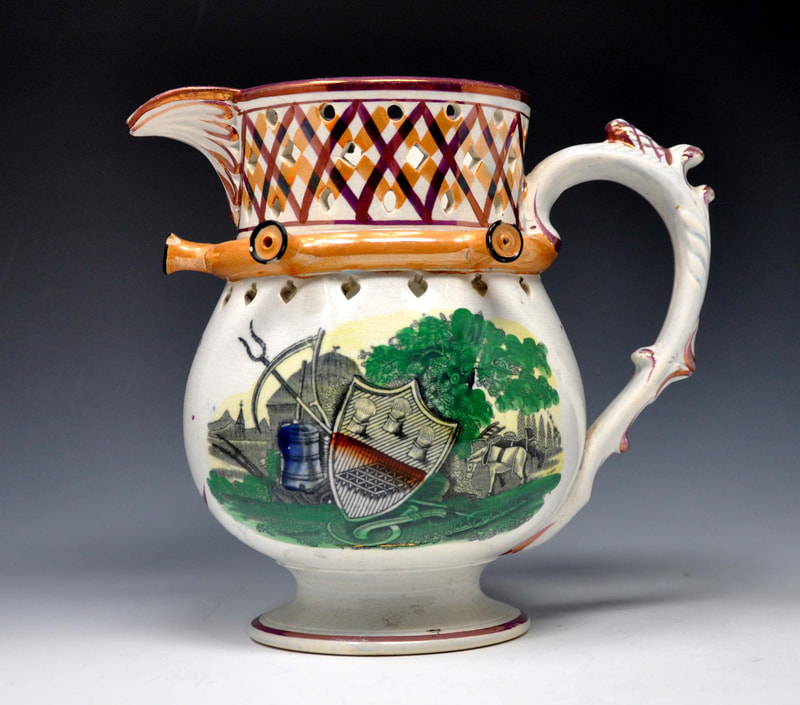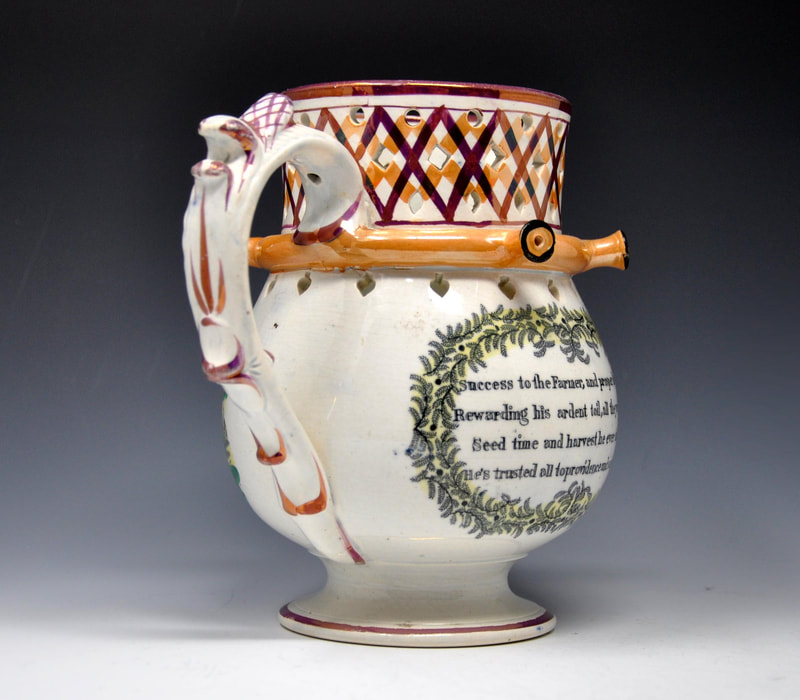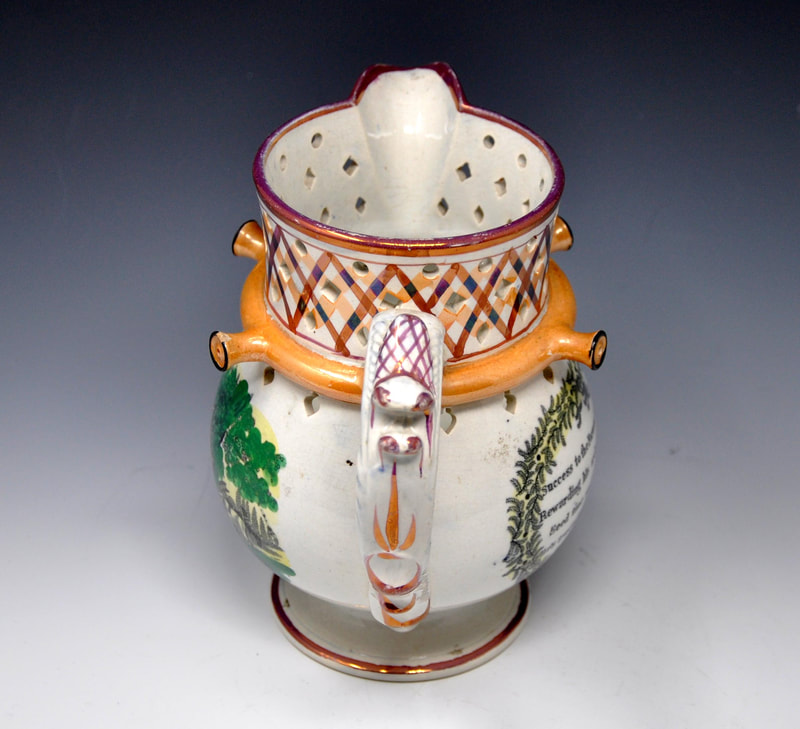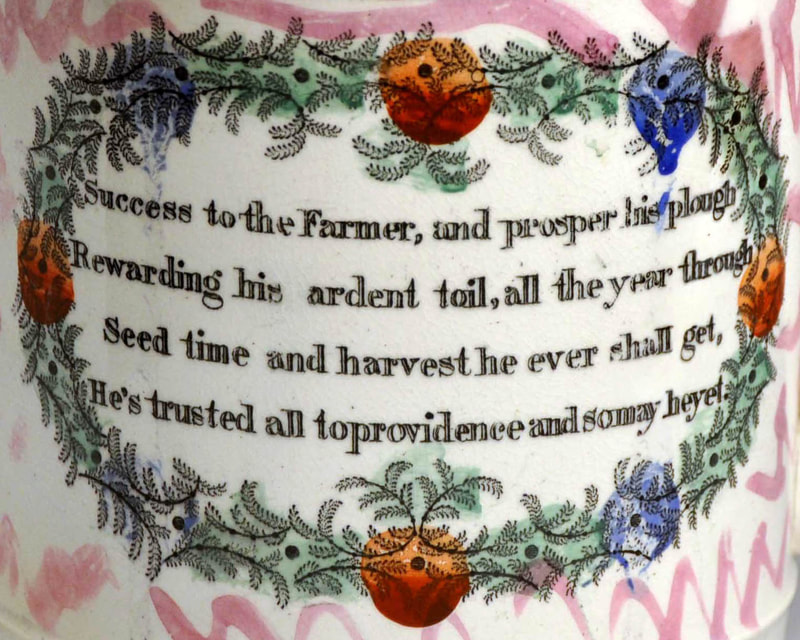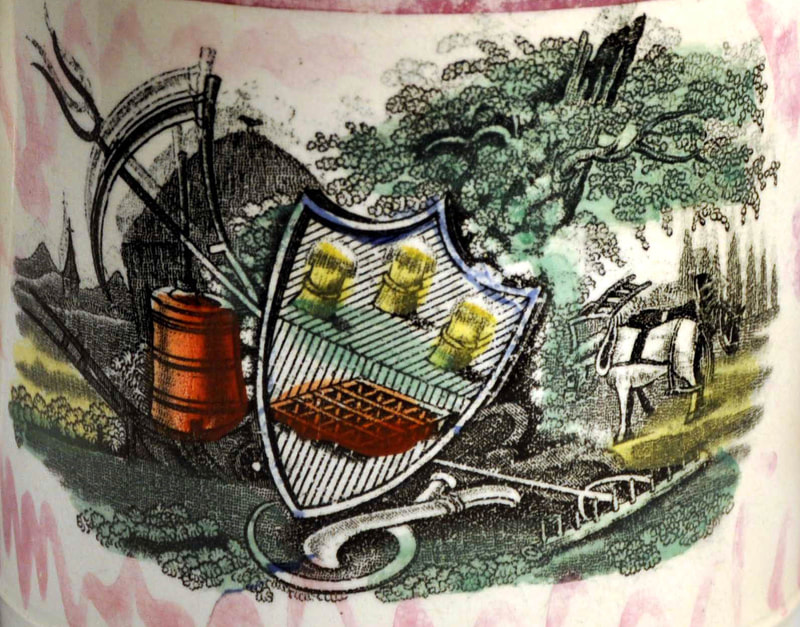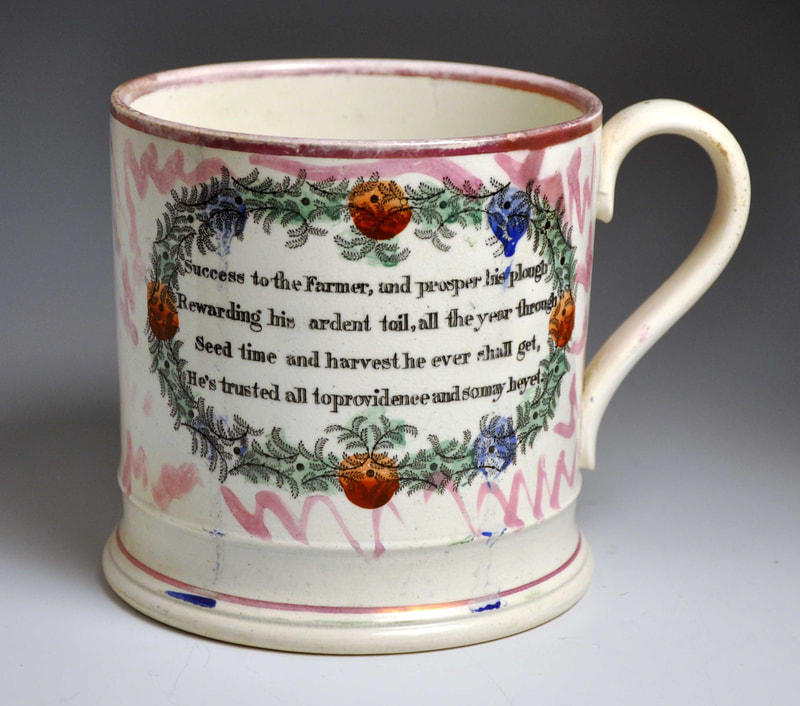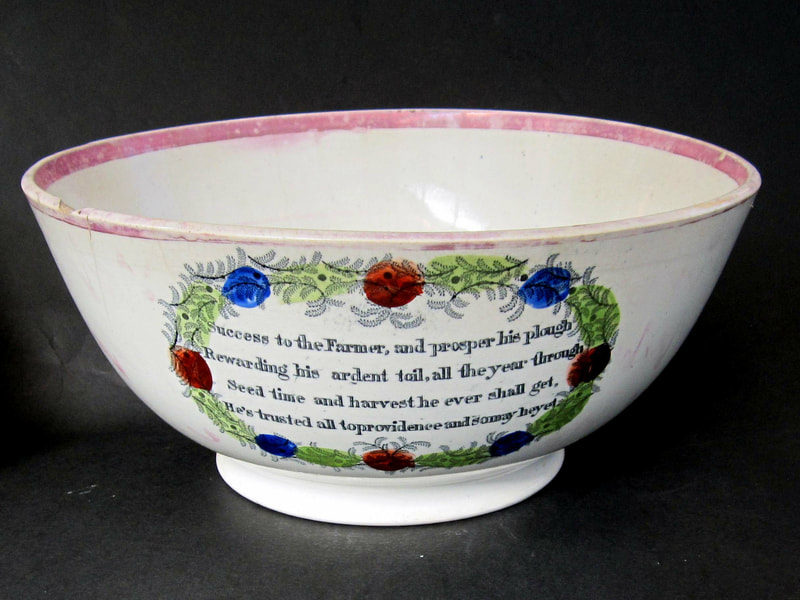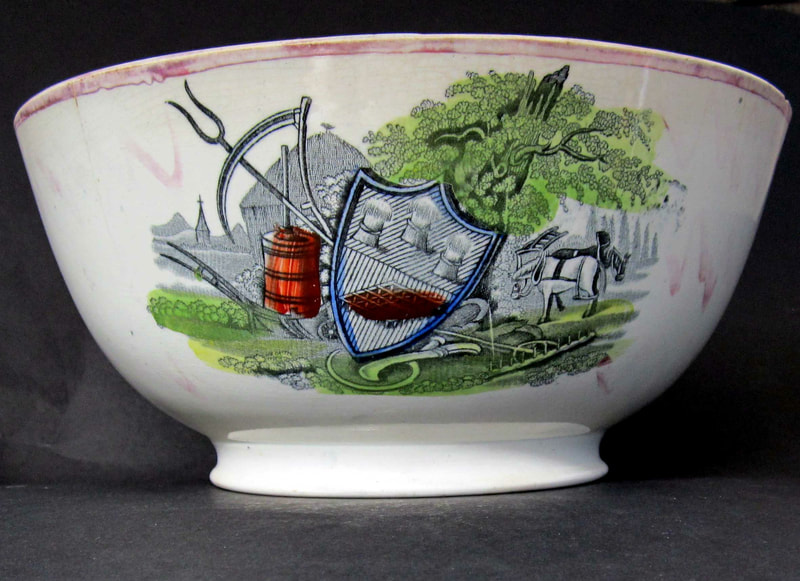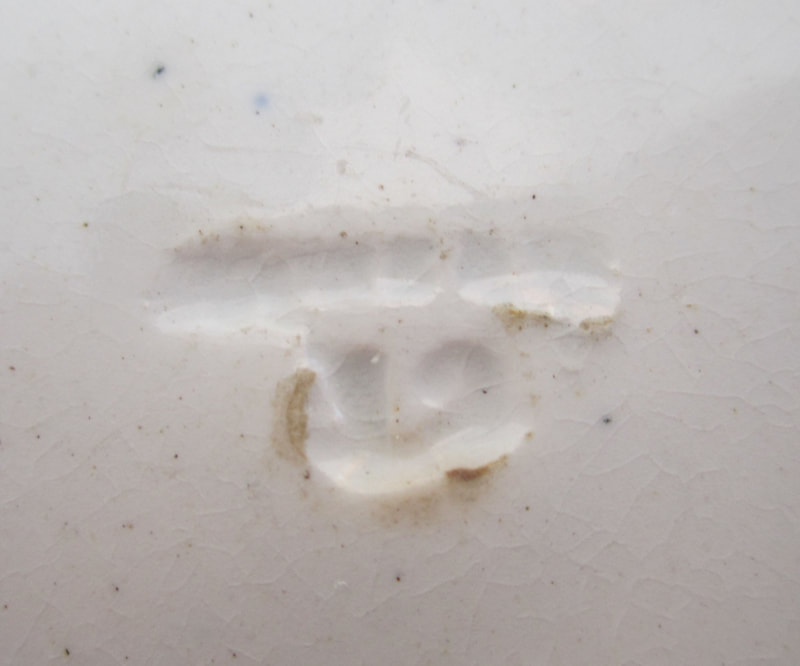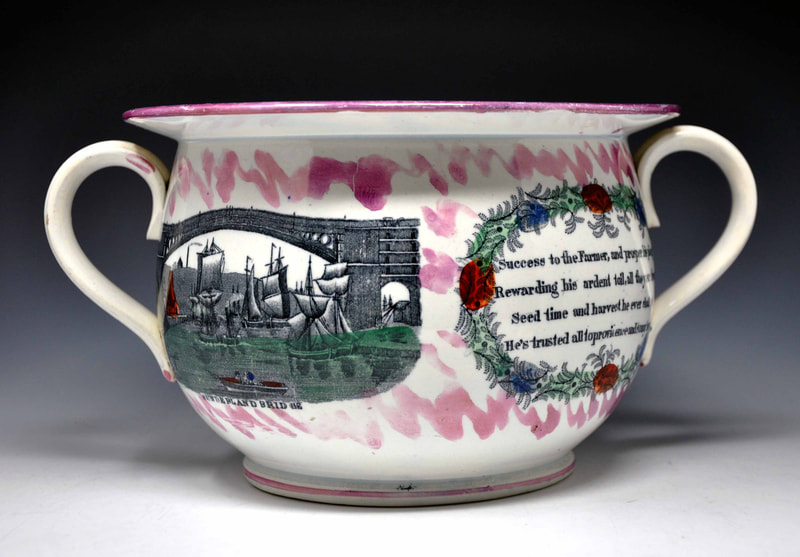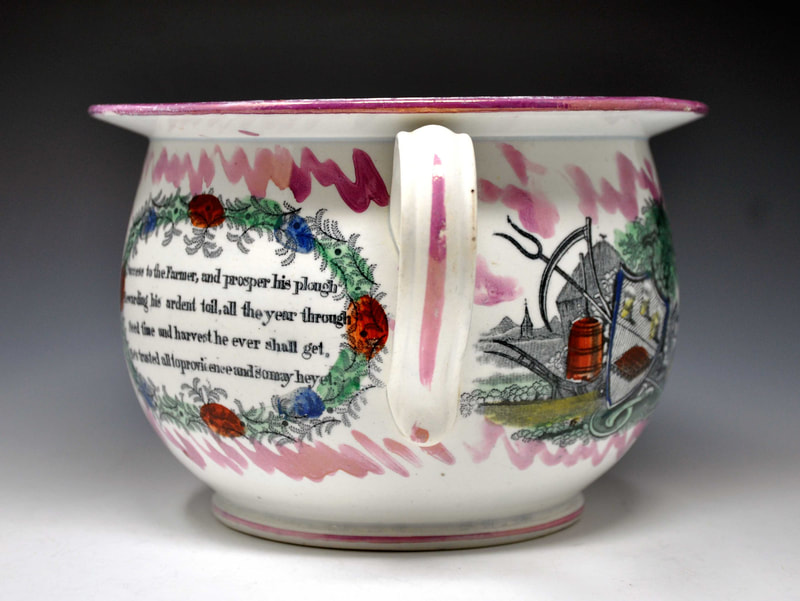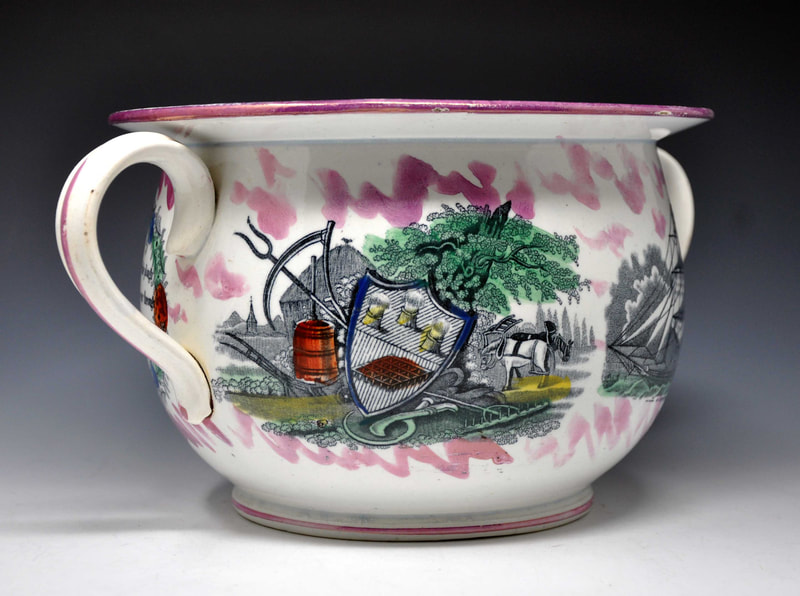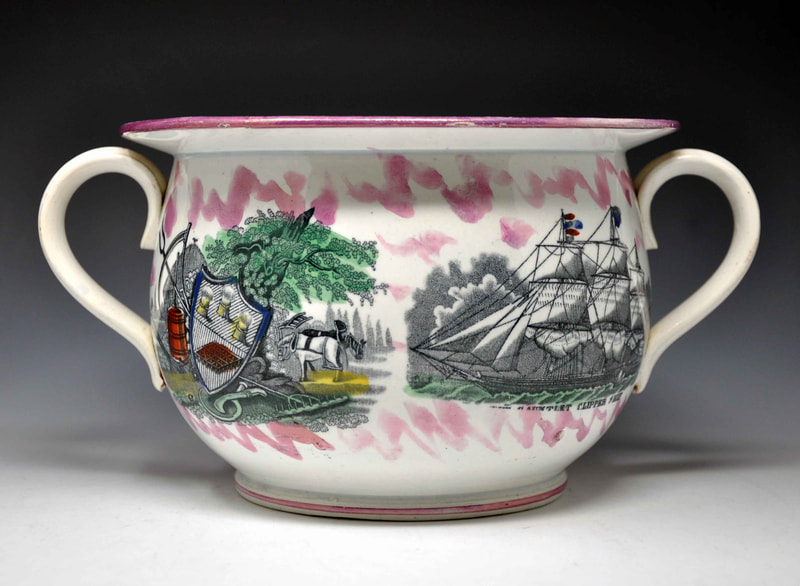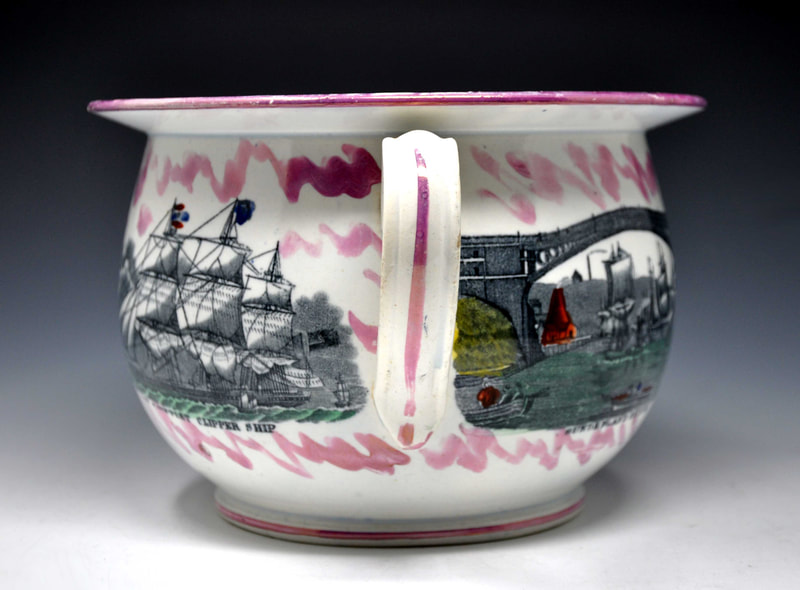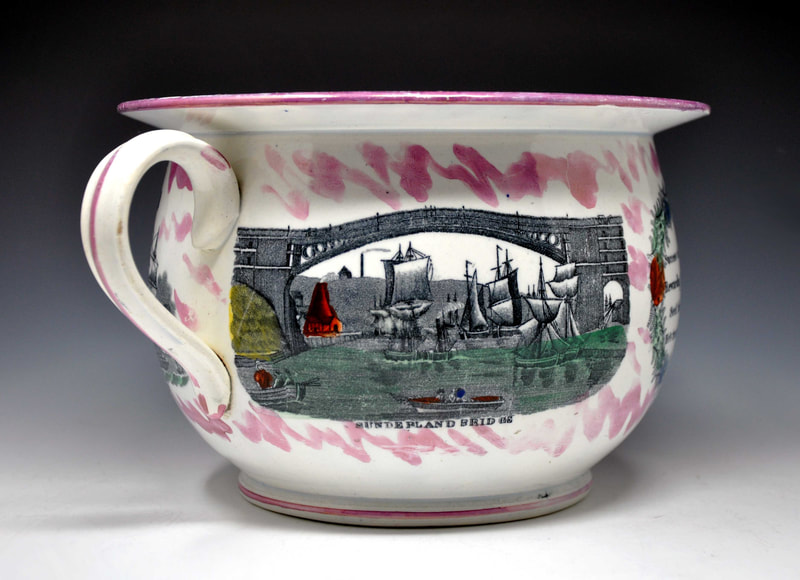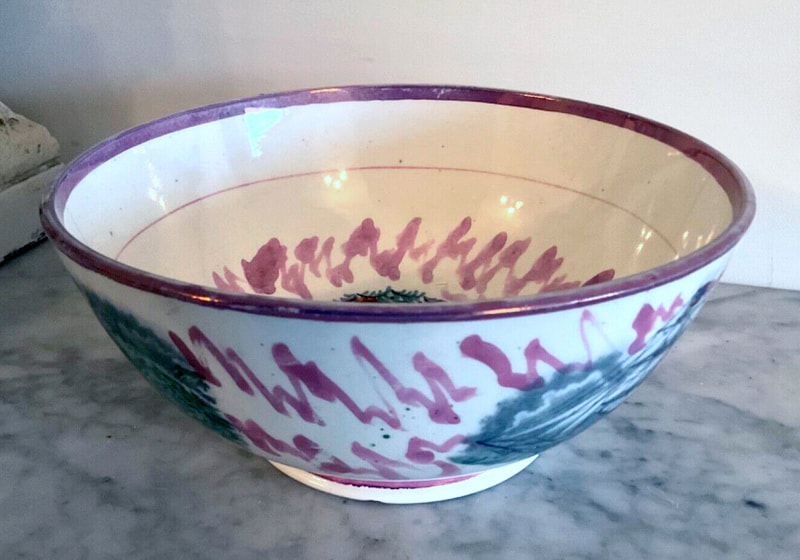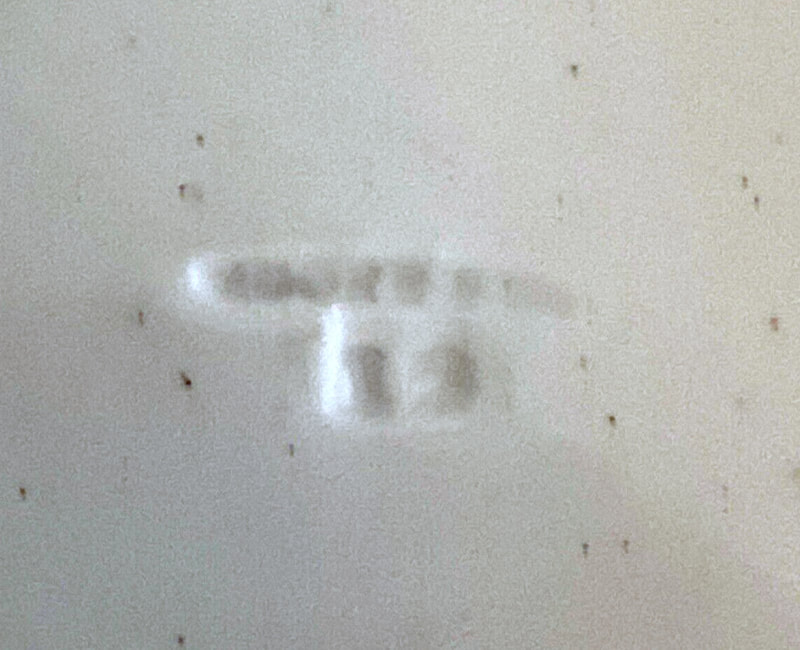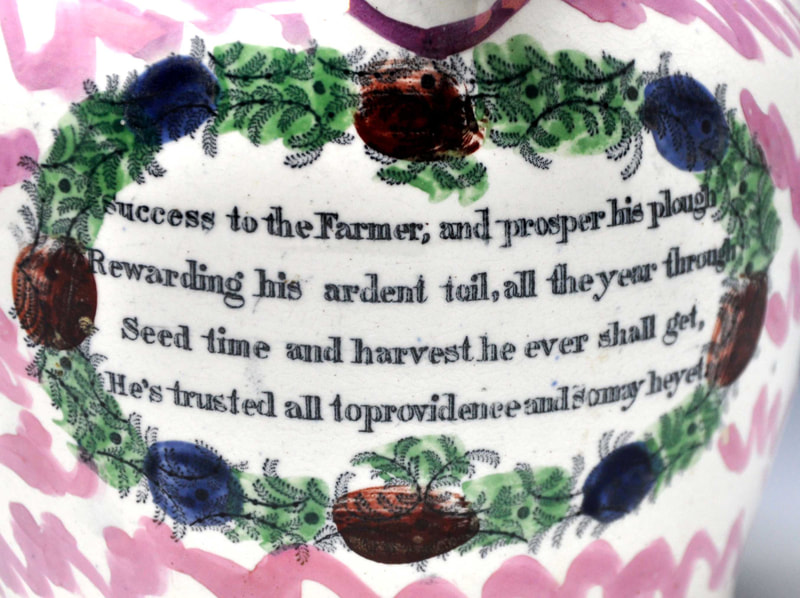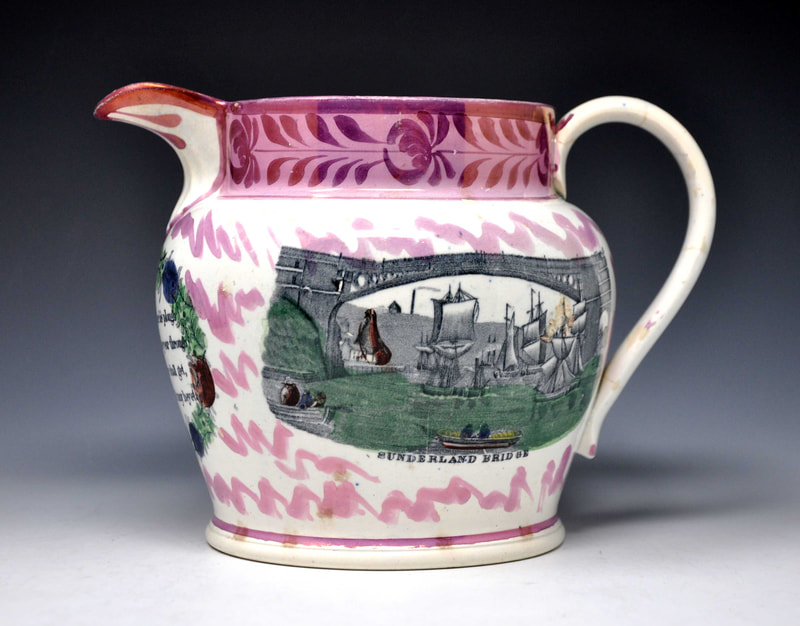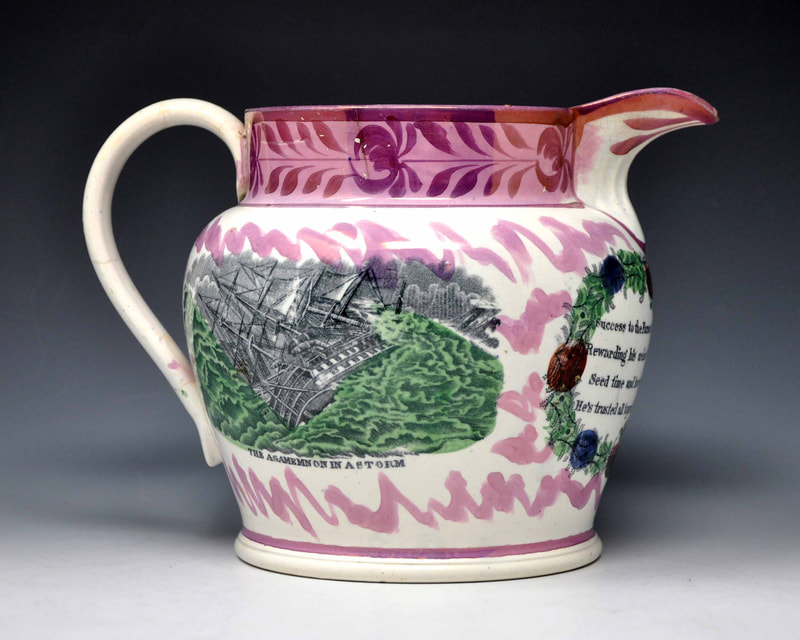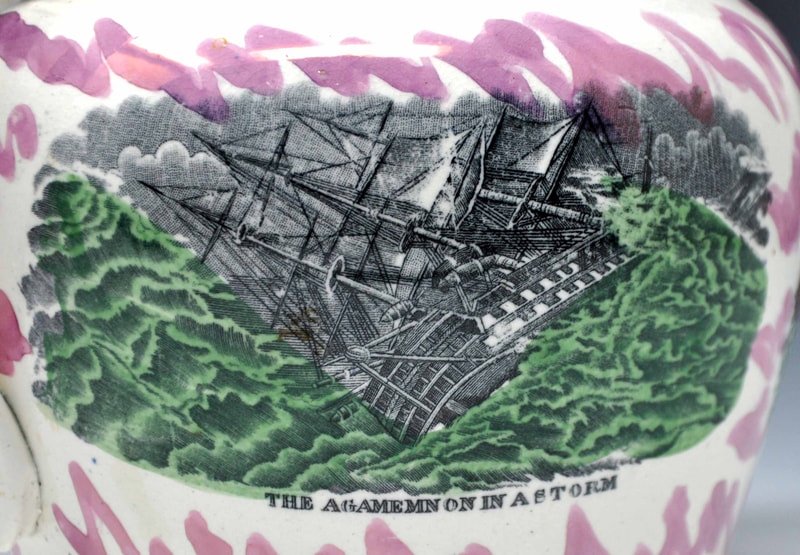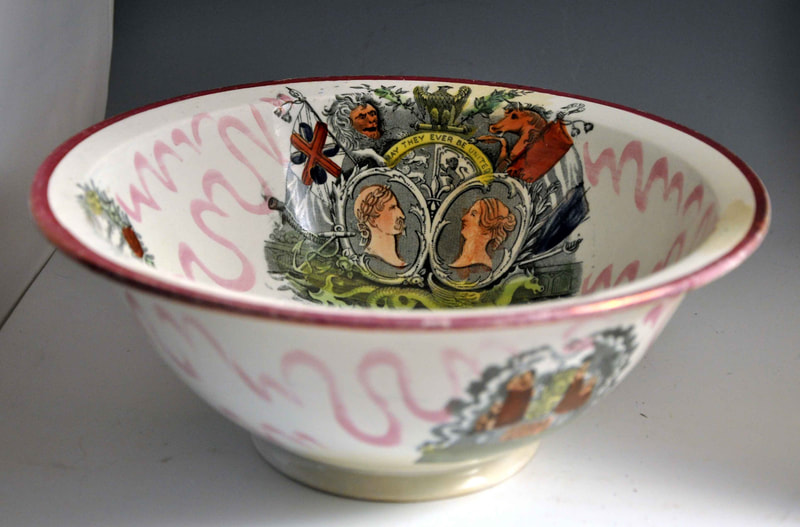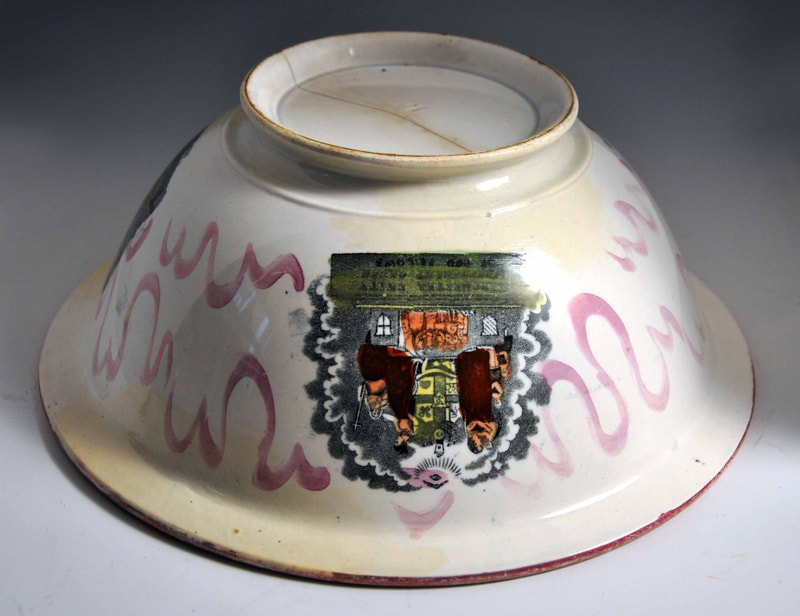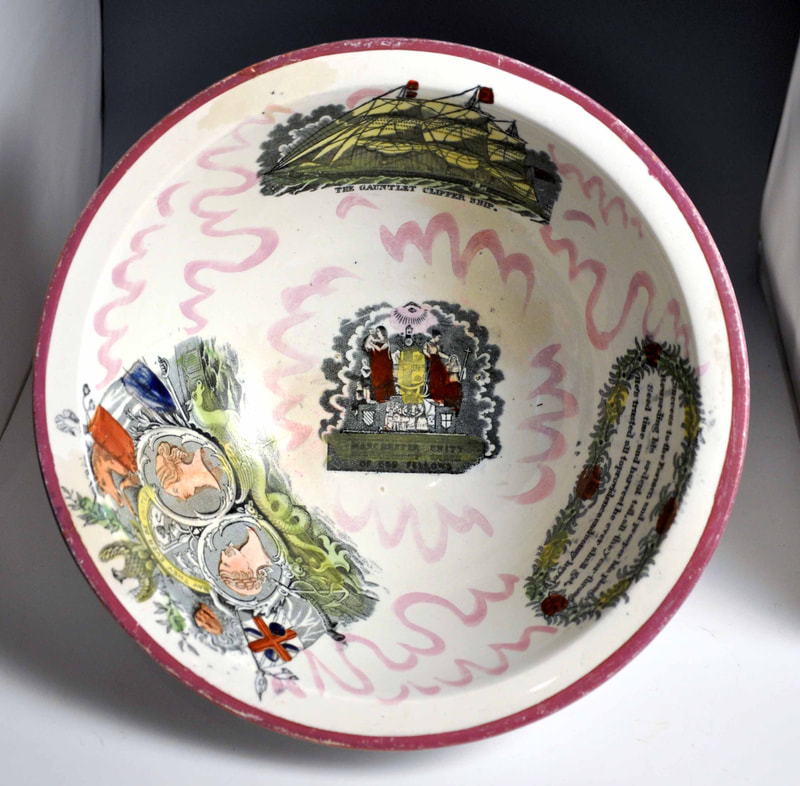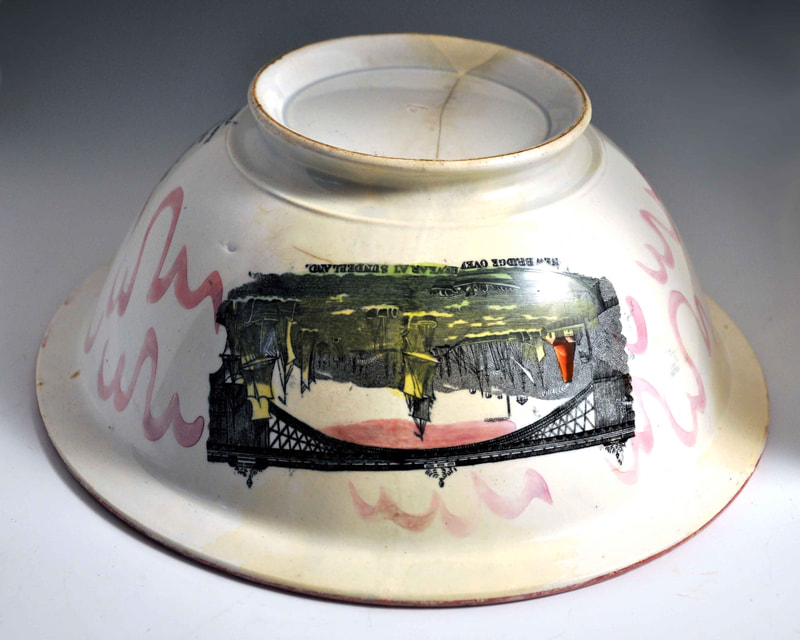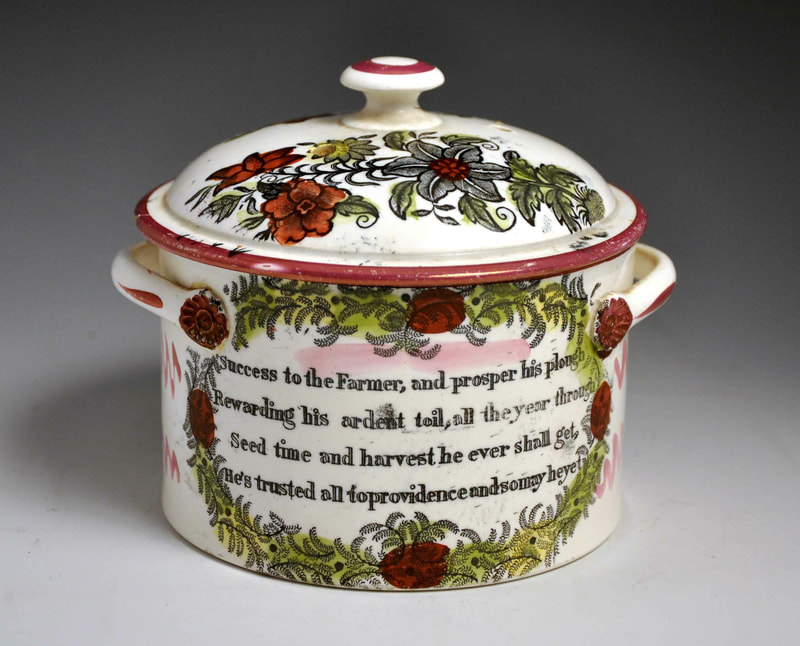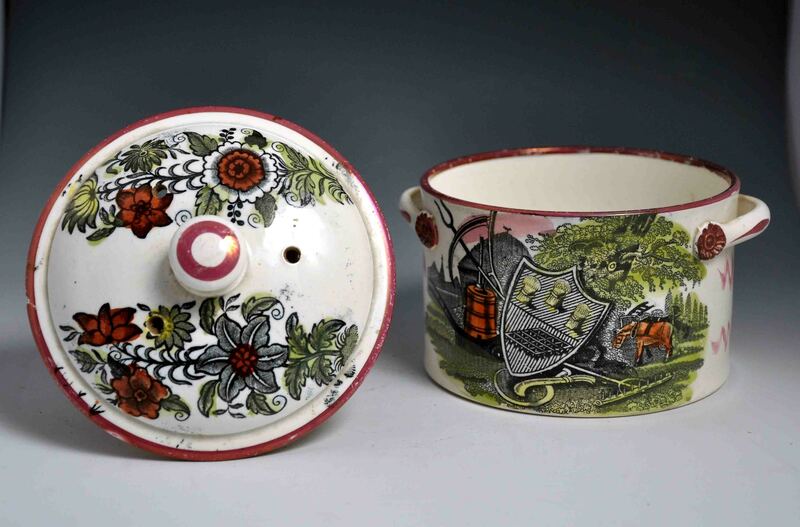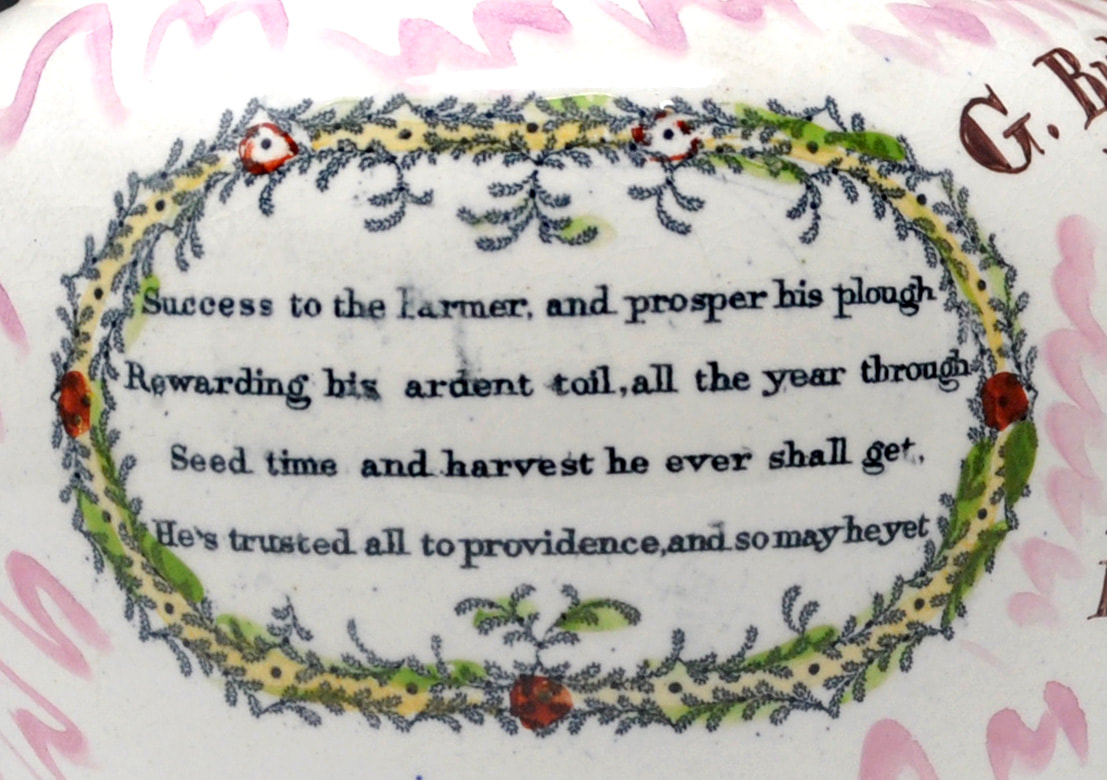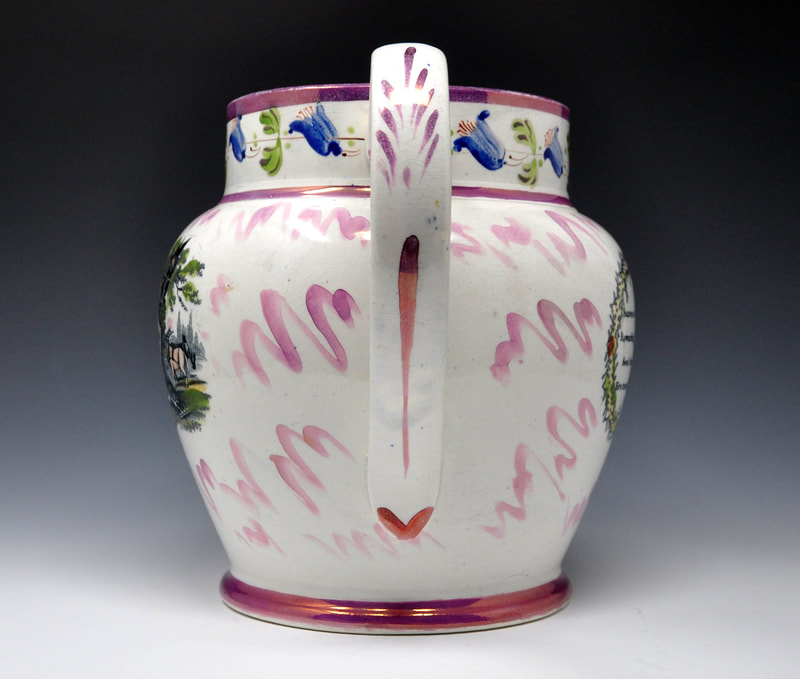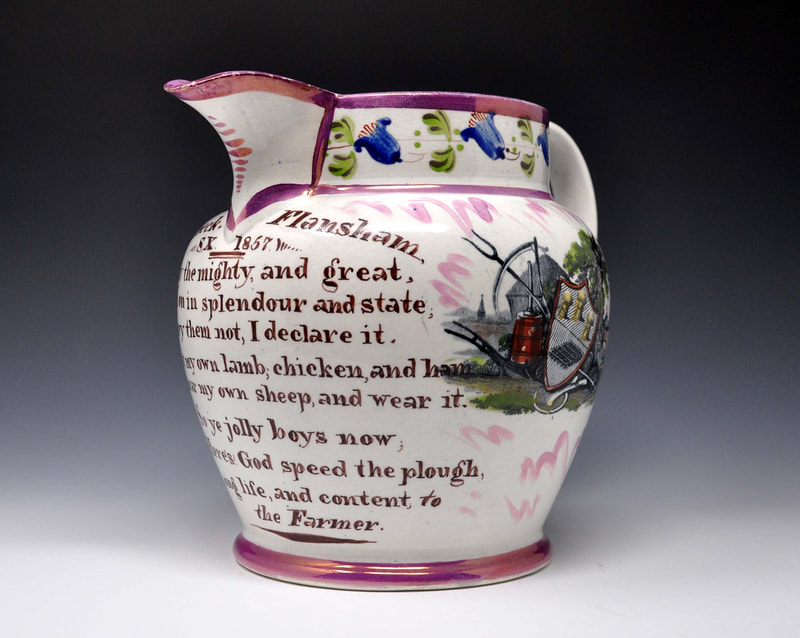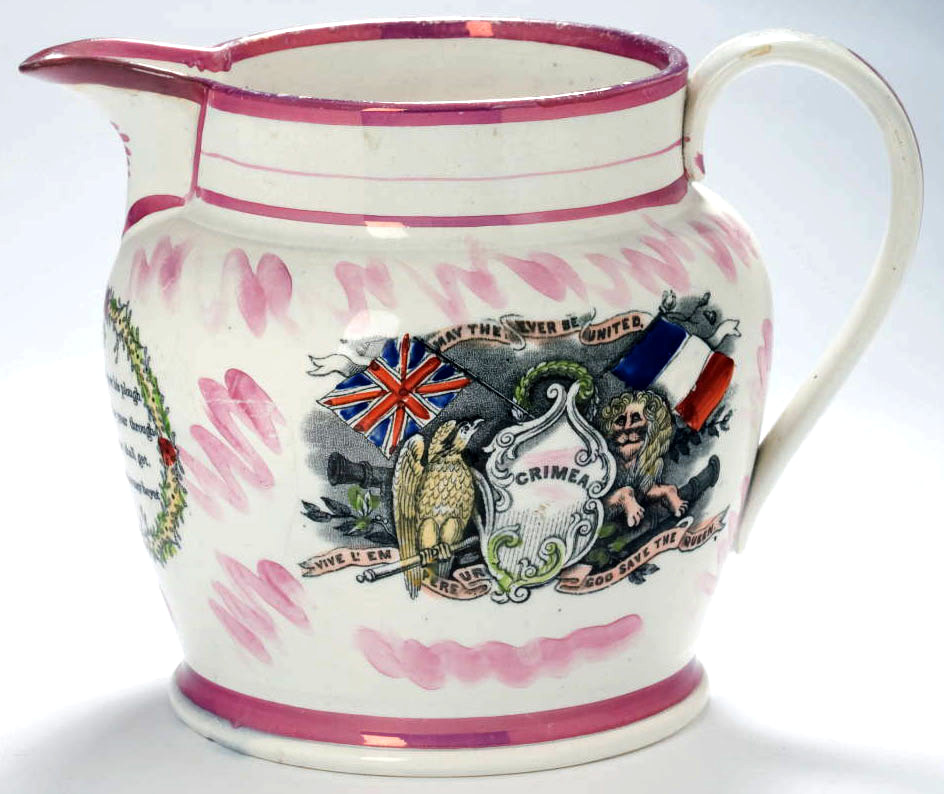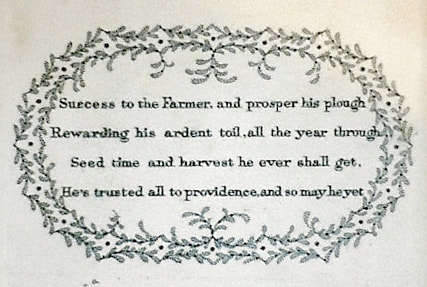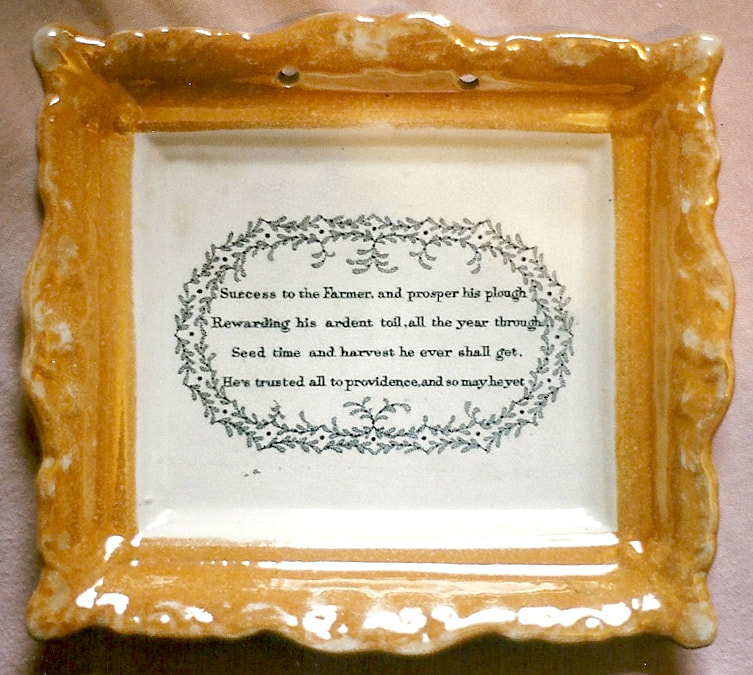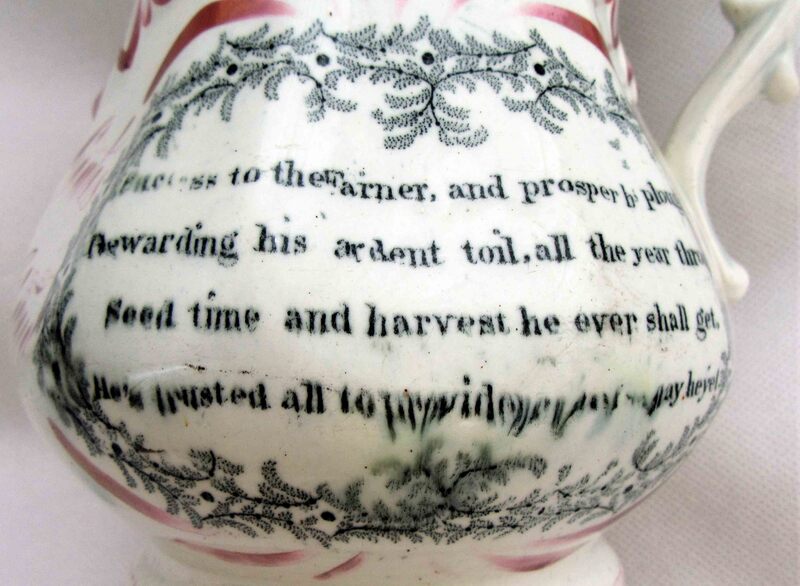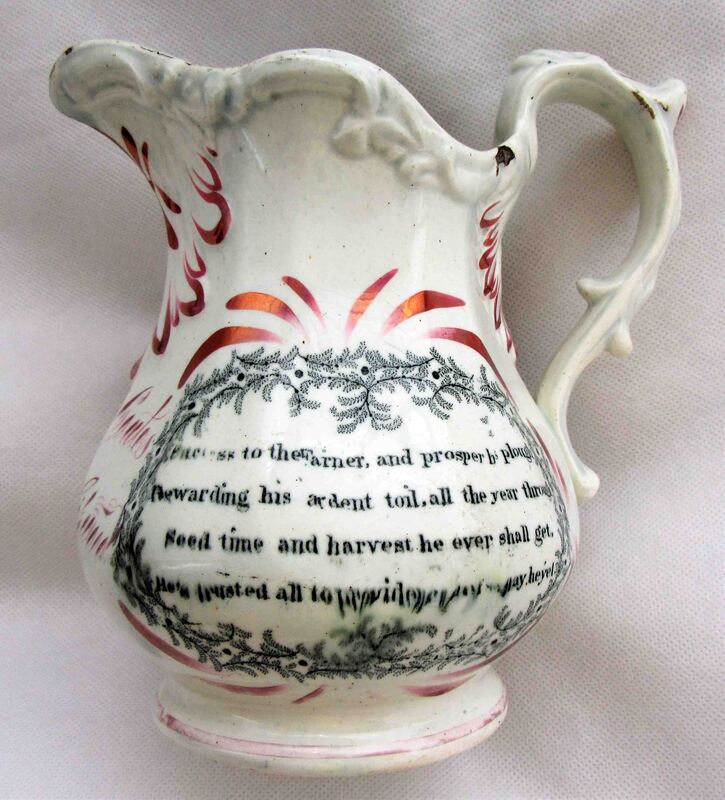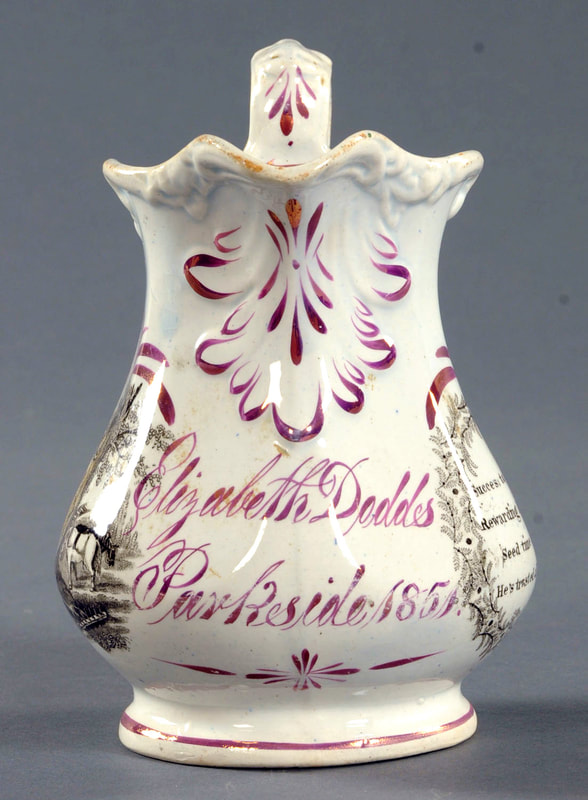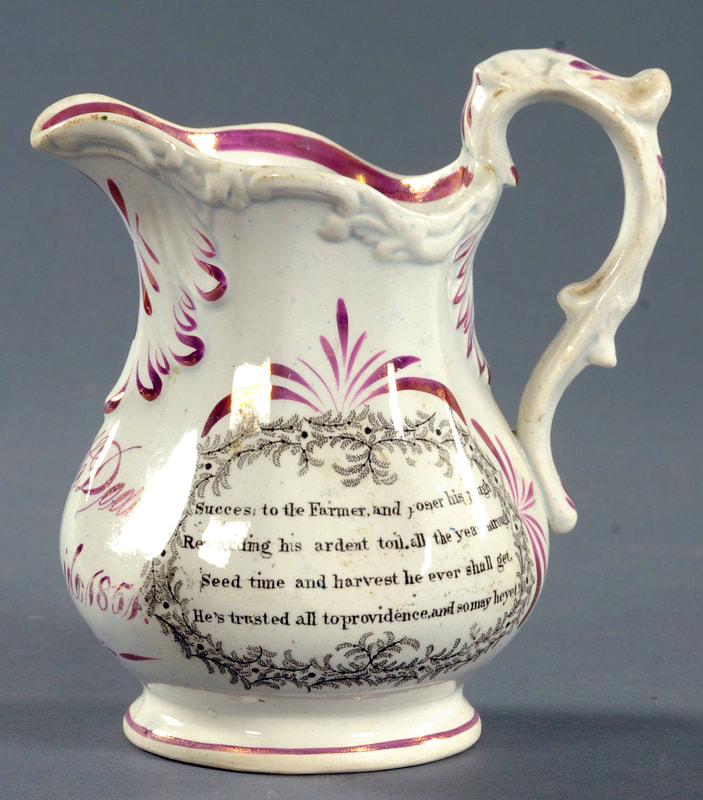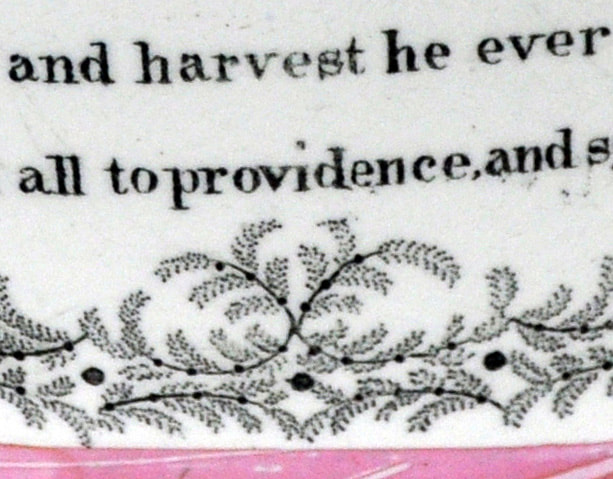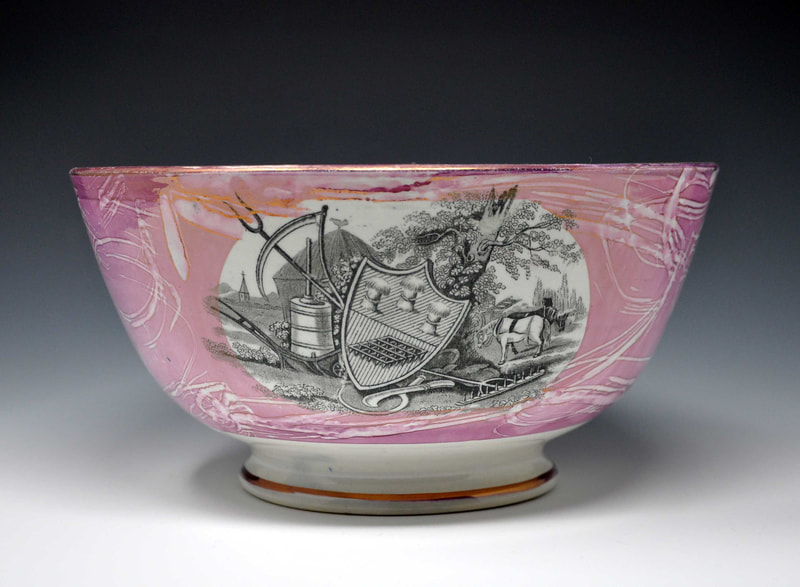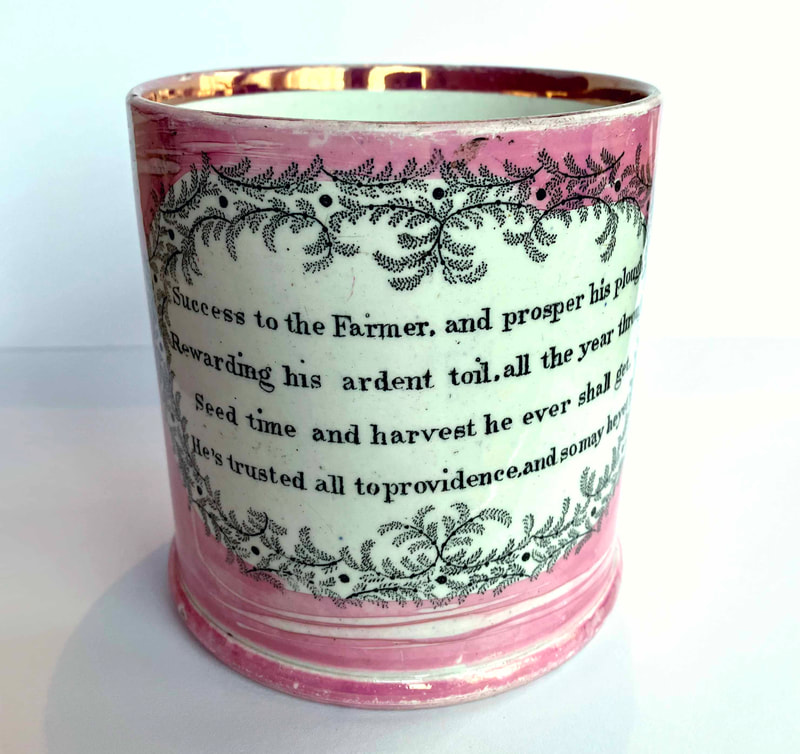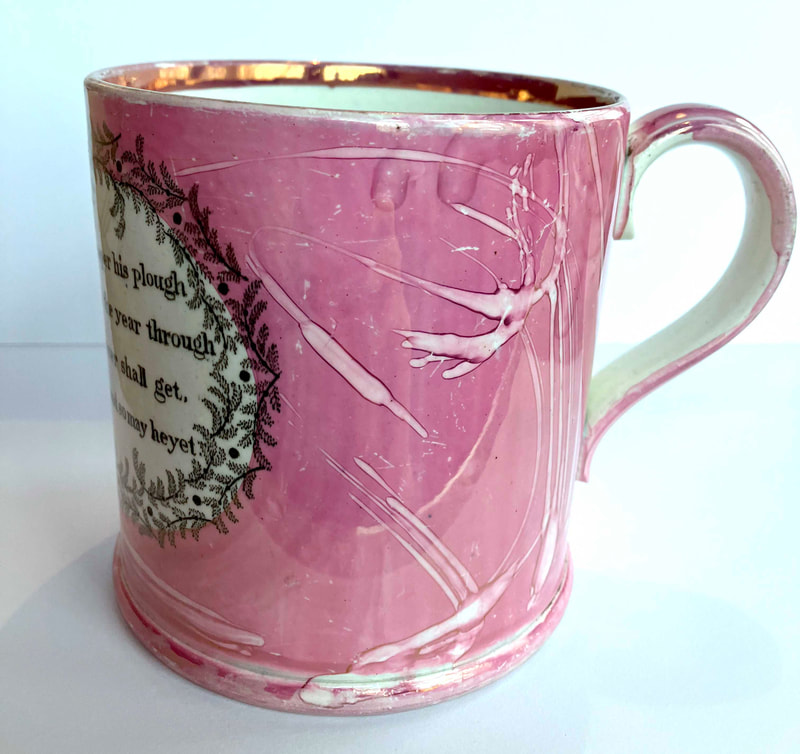Success to the Farmer – Sunderland
The verse appears on pots from both Wearside and Tyneside from about 1850 onwards.
Success to the Farmer, and prosper his plough
Rewarding his ardent toil, all the year through
See time and harvest he ever shall get,
He's trusted all to providence, and so may he yet
Success to the Farmer, and prosper his plough
Rewarding his ardent toil, all the year through
See time and harvest he ever shall get,
He's trusted all to providence, and so may he yet
There is an original copper plate with the transfer, donated by the Ball family, in the Sunderland Museum & Winter Gardens, Tyne & Wear Archives & Museums collection. It appears to have started life at the Garrison Pottery, then moved to Scott's when the Dixon partnership ended in 1865, before finally being acquired by Ball's.
All the imprints from this plate have a unique flaw. There is a small vertical scratch under the second 't' in 'trusted', perhaps where the engraver slipped. It is most clearly seen in the second detail below from the Garrison Pottery pedestal bowl. By the time the plate arrived at Scott's (right detail below) it appears to have faded a little.
Dixon, Phillips & Co, Garrison Pottery
A Dixon pedestal bowl, c1860, with branchlike lustre decoration particular to the Garrison Pottery. This is the transfer from the copper plate in the Sunderland Museum, which would later be acquired by Scott's and then Ball (detail from the word 'trusted' shown above). The transfer plate was re-engraved at various times in its life. Note that in these earlier Dixon imprints, the 'i' in the word 'providence' is not dotted. By the time the copper plate reached Scott's, that omission had been rectified.
A slop bowl with an impressed mark, 'Dixon Co', used after 1850.
A rare puzzle jug, from the early 1860s, with the transfer. This is the only orange lustre item I have seen produced by the Garrison Pottery, which closed in 1865. The flower lustre decoration under the spout is found on Dixon (Garrison) items from the 1850s. Also, the decoration of the handle. It shows that the Garrison Pottery was able to produce finer quality items right up until the end.
Moore's Wear Pottery
This transfer is very similar to the Garrison version, but from a different copper plate. Note that the words in the second detail are compressed as they are in the Garrison version. However, there is no scratch under the second 't' in trusted. The word 'providence' has a dotted 'i'.
A Moore's chamber pot, c1860, with typical zig-zag lustre decoration.
Another Moore-impressed bowl, c1860. The combination of transfers suggests that Moore's Pottery had a copper plate made that was very similar to the Dixon/Scott one shown above, with transfers of the 'Sunderland Bridge', 'Gauntlet Clipper Ship' and 'Agamemnon in a Storm'.
A jug with unusual decoration to the collar, and the same transfers as the items above.
Scott's Southwick Pottery – plate 1
This is the copper transfer plate acquired from the Garrison Pottery in 1865, and now in the Sunderland Museum. All these items have the scratch on the second 't' in 'trusted'.
Scott's Southwick Pottery – plate 2
This version of the transfer has a different style of lettering altogether.
The jug above is dated 1857, and the one below has the Crimean transfer, c1855.
Scott's Southwick Pottery – plate 3
This is very similar to plate 2 above. However, note the arrangement of the right half of the central sprig in the middle detail (above the word 'and'), and compare it to version 2 above. Below two typical Scott jugs from the 1850s. The first has the 'Crimea' transfer, c1855.
The jug below has a Jersey inscription for 1854.
Attributed to Ball's Deptford Pottery
This appears to be the Scott 'plate 3' version of the transfer. I don't yet have a Ball example with the Garrison/Scott 'plate 1' transfer, although they must be out there somewhere, As the last surviving pottery making 'Sunderland wares', Ball's Deptford Pottery became a repository for transfer plates and moulds from potteries on both Wearside and Tyneside.
Below, a glimpse of what appears to be the Garrison/Scott 'plate 3' transfer on a Ball's bowl, c1900.
Success to the Farmer – Tyneside
Robert Maling, Newcastle
Below, two moulded jugs; the second with an inscription dated 1851.
C T Maling, Newcastle
This transfer is attributed to Maling on the basis of the bowl below in the Sunderland Museum & Winter Gardens, Tyne & Wear Archives & Museums collection. The catalogue says it has a triangular impressed mark with the initials CTM.
Two heavily lustred mugs. The second with the High Level Bridge Newcastle Upon Tyne.



